nd tiny harvests at arm’s reach—your green balcony can be much more than a pretty perch; it can become an ecological engine that feeds you, cools your apartment, and restores a slice of biodiversity to the city skyline. The 20 ideas below translate big-picture sustainability into small-space, hands-on projects, blending vertical ingenuity, smart tech, natural materials, and year-round comfort so every square foot pulls double (or triple) duty. Whether you crave herbs for supper, shade that pays its own power bill, or a mini wildlife refuge, there’s an approach here that fits both your budget and your balcony’s weight limit. Let’s dig in.
1. Vertical Herb Wall Hooks a Kitchen Garden to the Railing
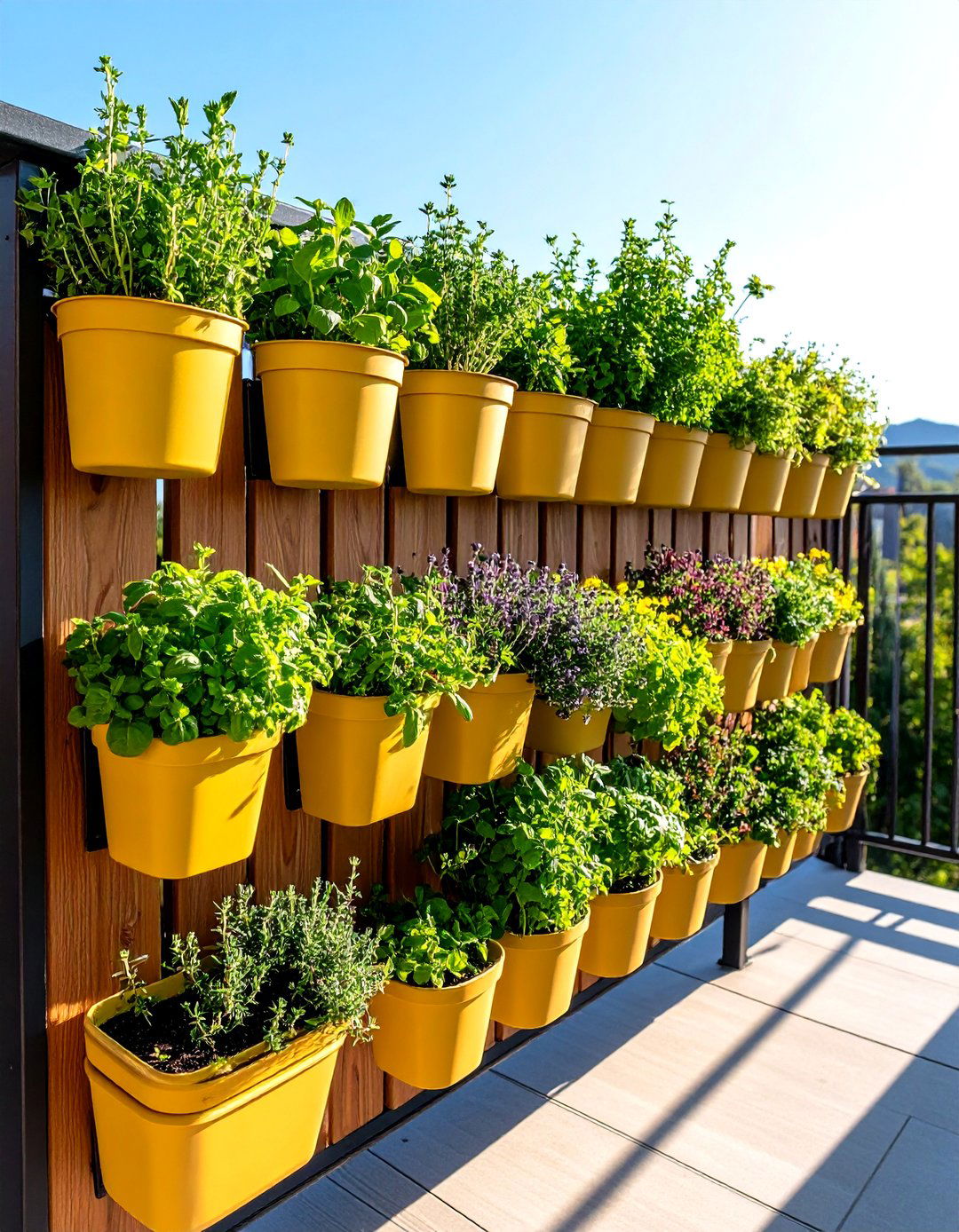
A burst of fragrance greets you each time you slide the balcony door open when you mount rows of quick-hook planters along a spare wall or railing. This vertical herb wall mimics the hooked containers used to cloak a bare fence in mint, thyme, and lemon verbena, but scaled for a balcony, giving you a living pantry that stays within reach of your stove. Cluster drought-tolerant herbs on higher tiers where wind is strongest and moisture-loving basil lower down to capture runoff. Rotate pots seasonally—strawberries in spring, chili peppers in summer—to keep both flavors and color fresh. Water deeply every morning in heat waves, or pair the wall with a micro-drip line for vacation insurance.
2. Railing Planter Boxes for Dwarf Veggies and Salad Greens

Despite its narrow footprint, a balcony railing can cradle a surprising crop when you anchor stable planter boxes that clip over or bolt onto the balustrade. Plastic or galvanized metal boxes are light yet deep enough for dwarf tomatoes, bush beans, or baby leaf mixes, maximizing sunlight where it’s brightest. Add a thin layer of lightweight expanded clay at the base to reduce weight and improve drainage, then top with a compost-rich potting blend. Because heat radiates off the railing, choose compact cultivars like ‘Tiny Tim’ tomatoes or ‘Paris Market’ carrots that mature quickly and shrug off midday sun.
3. Native Pollinator Pocket for a Resilient Green Balcony
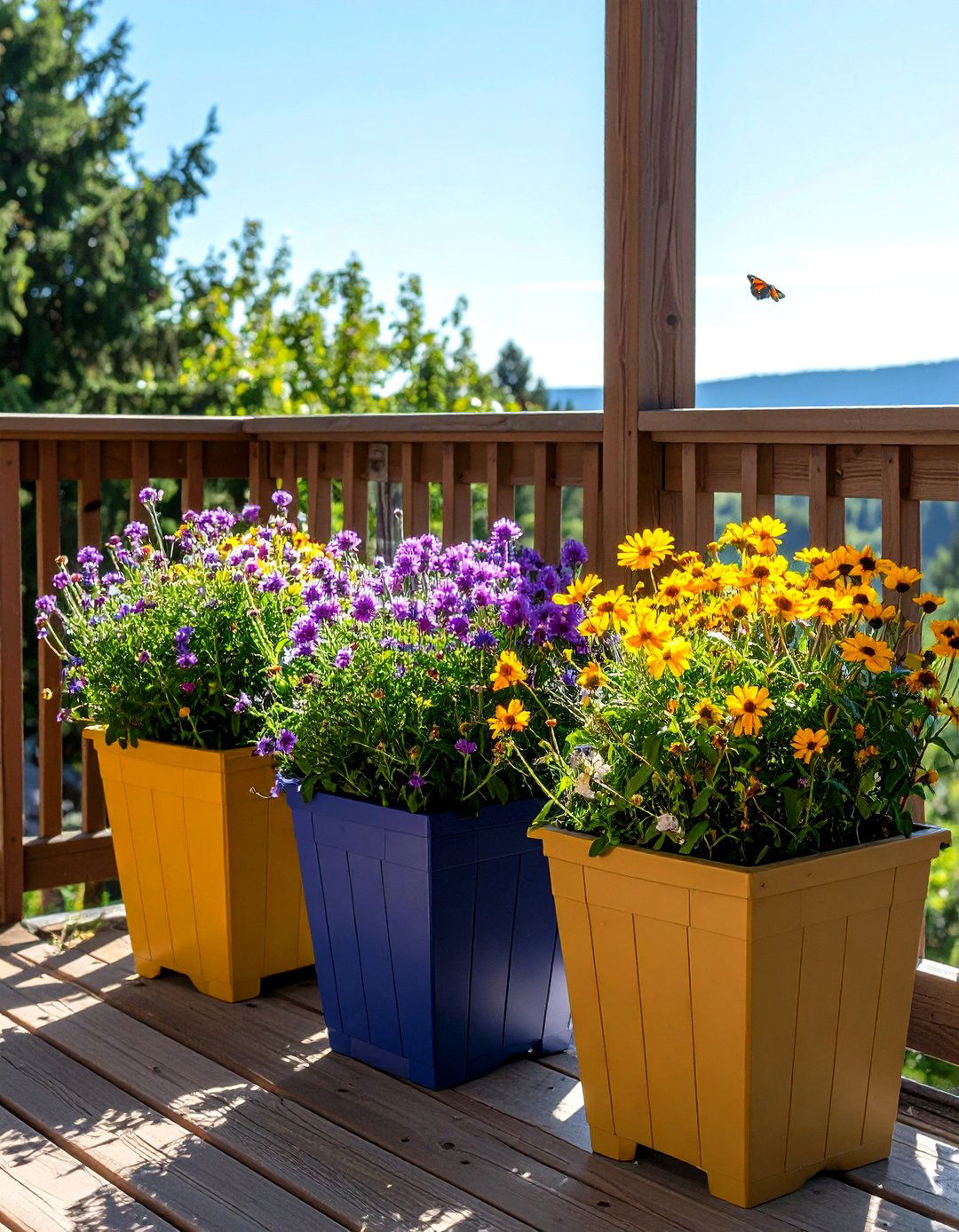
Surprisingly vibrant prairie natives—think aromatic aster, partridge pea, and nodding onion—thrive in deep containers and lure local bees while needing less water than exotic annuals. Select pots at least 40 cm tall to give deep roots room; insulate the interior with recycled Styrofoam sheets to buffer winter freezes, a trick urban botanists use on Chicago rooftops. Mix bloom times so nectar flows from spring to frost, and leave seed heads standing for overwintering insects. The payoff is a balcony alive with movement—and zero pesticide dependency.
4. Counter-Top Hydroponic Tower for Year-Round Greens
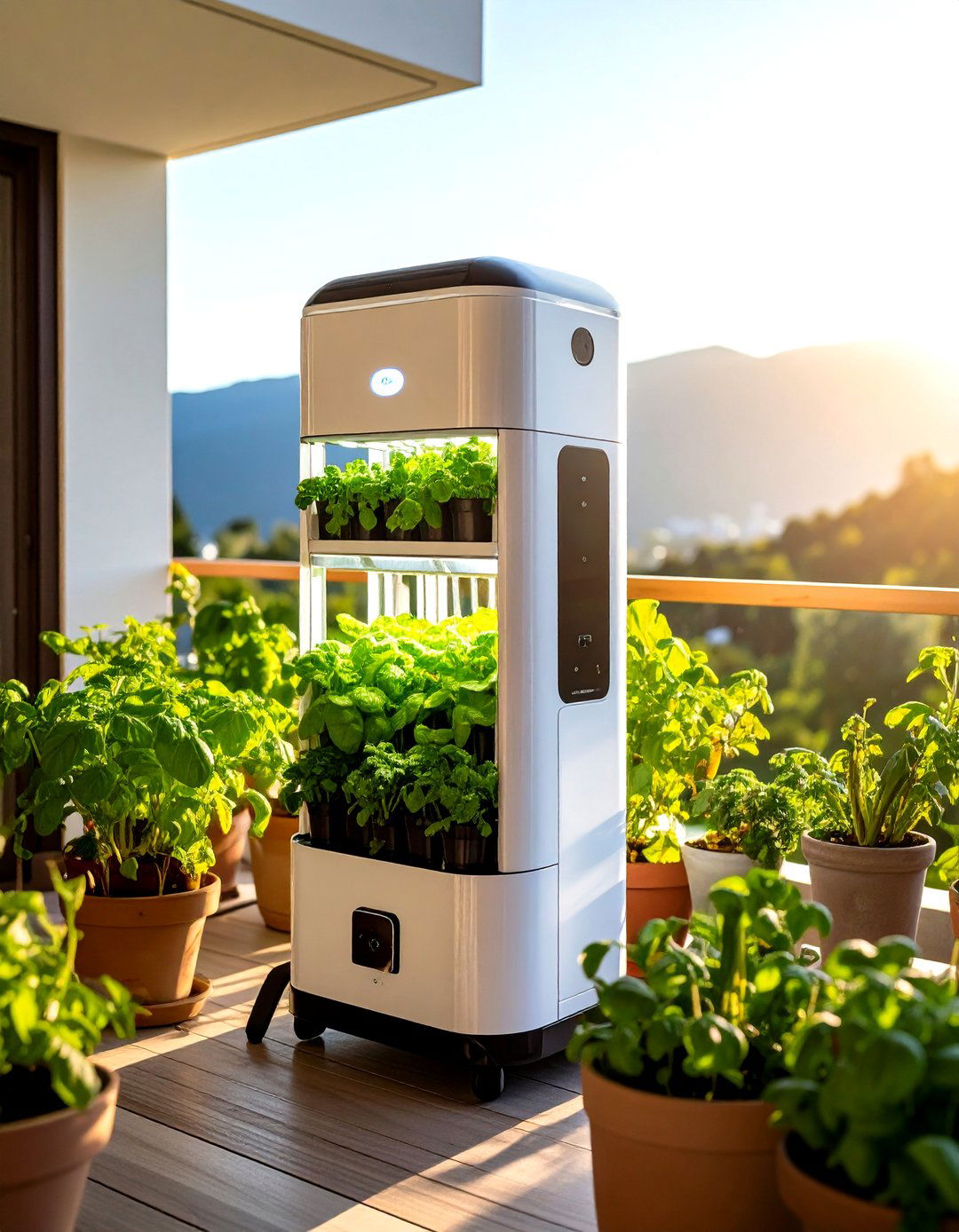
Aeroponic or wick-fed hydro towers, such as compact countertop models highlighted in hydroponic buyer guides, let you harvest lettuce, shiso, and dwarf peppers even when outdoor temperatures dip. Place the unit in a shaded corner to avoid algae bloom, plug it into a smart outlet, and supplement natural light with a 12-hour LED cycle during winter. Used nutrient solution doubles as a liquid feed for soil pots, closing your balcony’s fertility loop. Because towers weigh little when empty, you can shift them indoors during storms without straining balcony load limits.
5. Upcycled Plastic-Bottle Vertical Garden
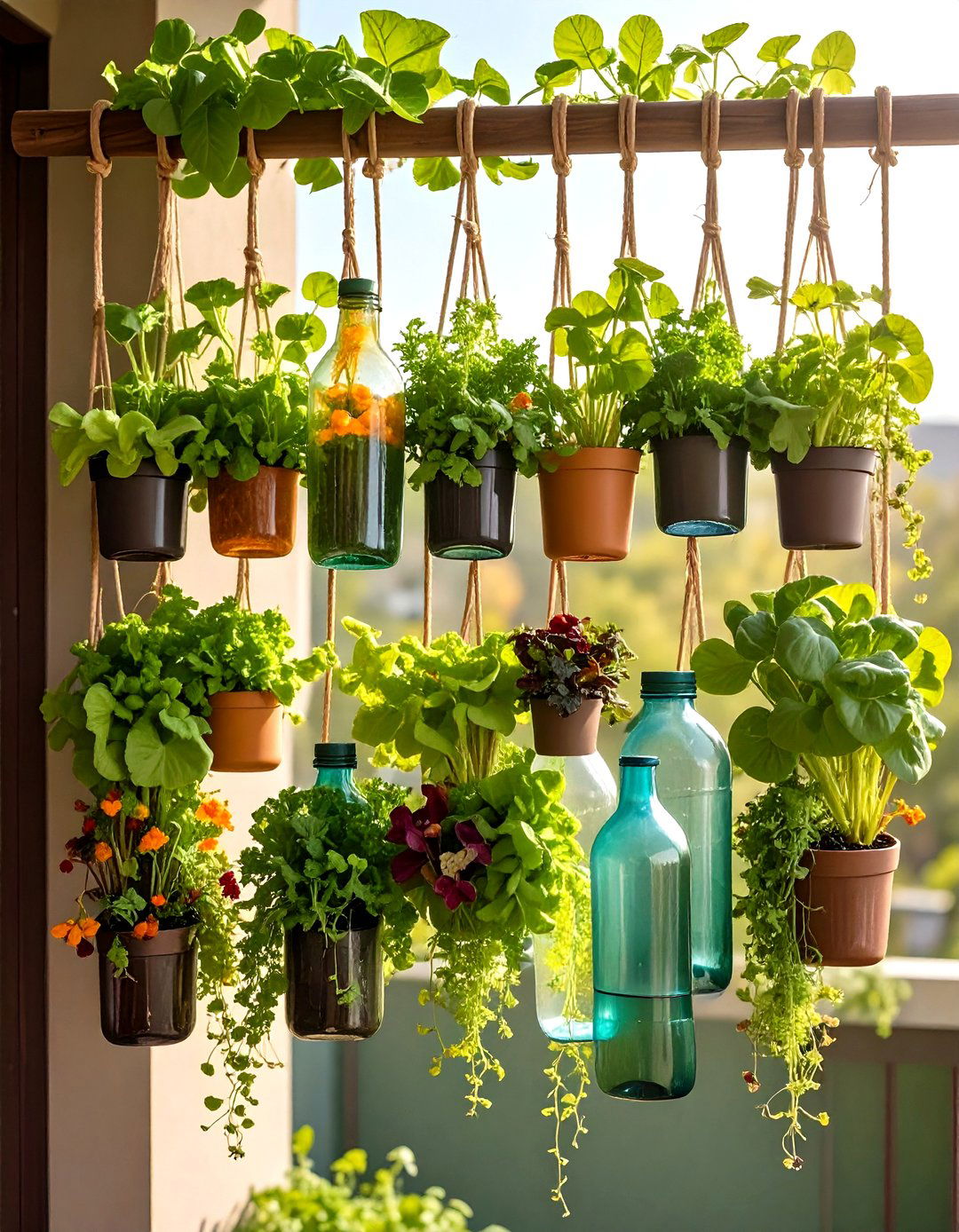
For cost-free greenery, slice two-liter bottles, thread them on sturdy twine, and create a cascading wall of lettuce and nasturtiums—an approach celebrated across DIY channels and recycling boards. Drill drainage holes, add a slim gravel layer, and tie knots beneath each bottle to keep spacing uniform. The clear plastic acts like a mini greenhouse, speeding germination, while the vertical stack shades lower plants from harsh sun. Finish by spraying bottles with matte paint in earthy tones to block UV and extend bottle life.
6. Slim Rainwater Barrel and Self-Watering Planters

Balconies catch more rain than you’d think. A narrow, 40-litre barrel fitted with a diverter hose from the roof gutter or an overhead drip line can supply weekend irrigation without turning on the tap. Pair the barrel with capillary mat-based self-watering pots so wicking cords draw moisture upward as needed, reducing fungal splash and conserving nutrients. Keep the barrel dark to suppress algae and install a child-safe lid that doubles as a plant stand for trailing strawberries.
7. Compact Compost Bin for a Closed-Loop Ecosystem
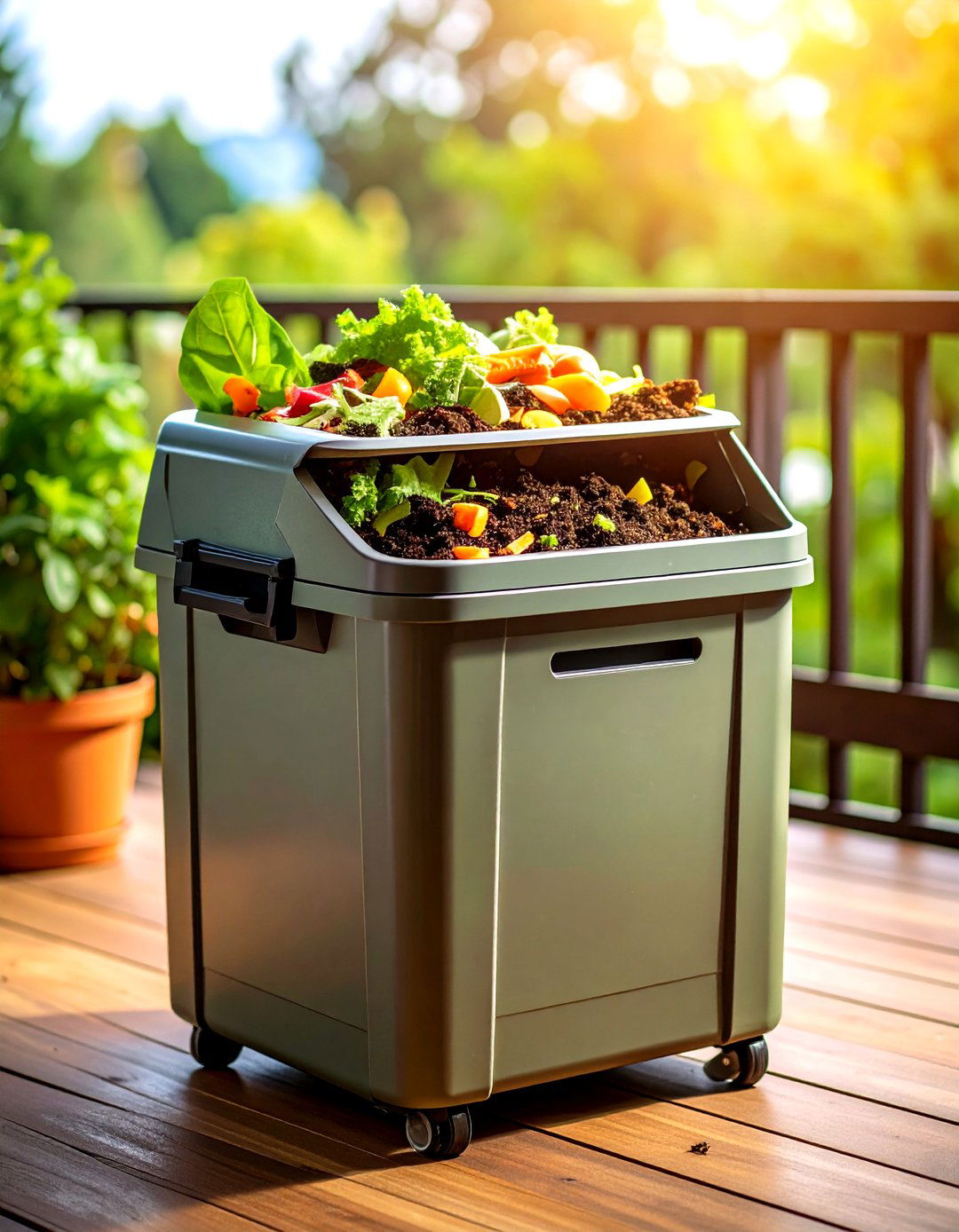
A lidded, ventilated plastic tote—no bottom holes, to spare downstairs neighbors—is all you need to turn veggie scraps into balcony black gold. Layer browns (shredded cardboard) with greens (coffee grounds), sprinkle a handful of mature compost to seed microbes, and rotate weekly. Position the bin on a dolly for easy turning and to protect flooring. Within 10–12 weeks, sift out a fluffy amendment perfect for replenishing railing boxes, proving even modest balconies can practice circular living.
8. Solar Pergola Shade That Generates Power
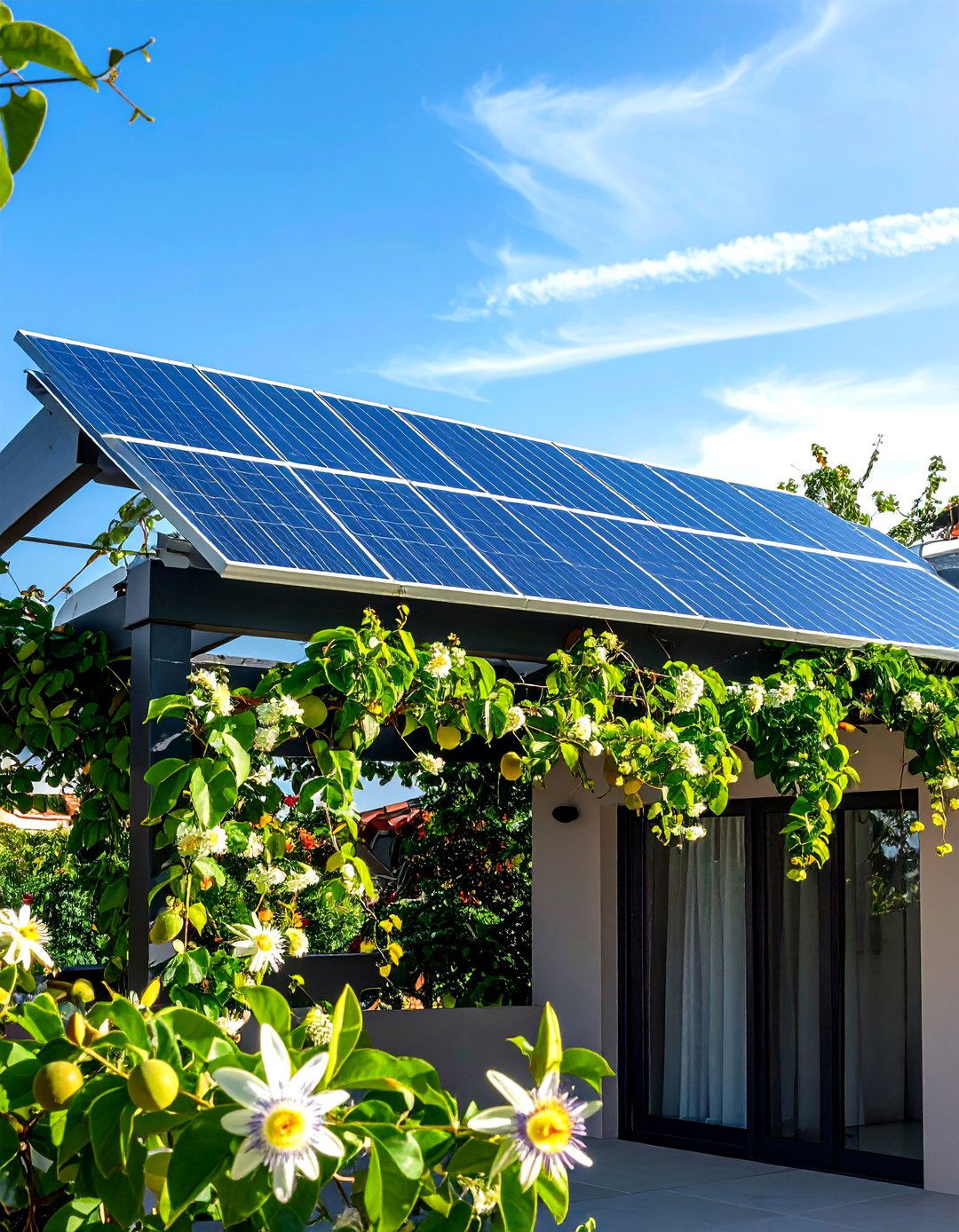
Instead of a standard canopy, mount a lightweight aluminum pergola frame topped with slimline PV panels; the structure shades tender ferns while feeding clean electricity back to your apartment’s grid tie. Climbing jasmine or passionfruit can twine up the posts, cooling panels by several degrees and boosting efficiency. Consult building management for weight specs—solar pergolas often need 30–45° tilt—and secure a licensed installer to anchor posts without piercing waterproof membranes.
9. Bluetooth-Smart Drip Irrigation Keeps Plants Alive While You Travel
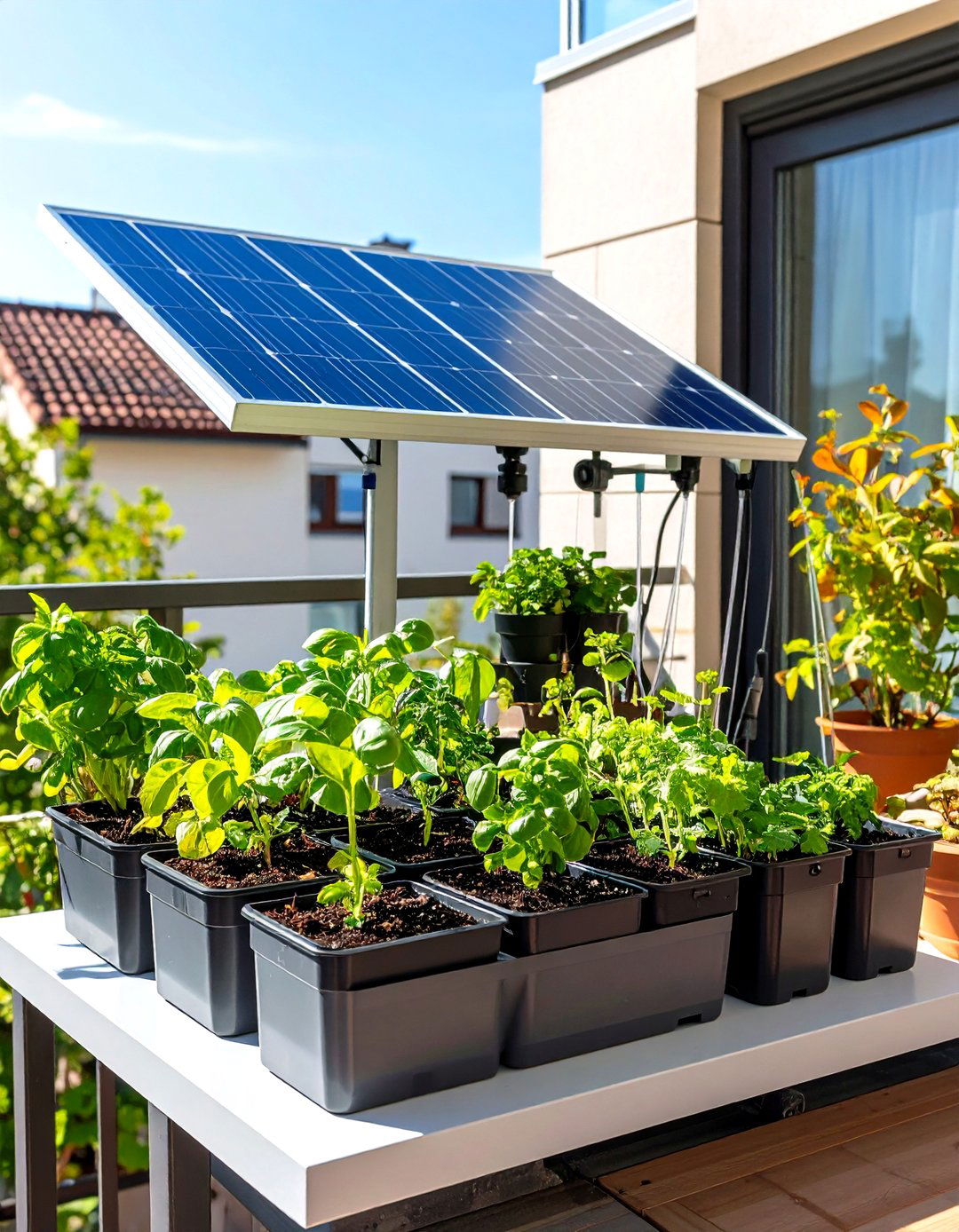
A solar-powered micro pump kit that monitors moisture and pushes water through 4 mm tubing to each pot has become a balcony essential for frequent travellers. Sync the unit to your phone, set weekday schedules, and let onboard sensors pause watering after rainfall, saving up to 70 % compared with hand-held hoses. For tech skeptics, user-tested reviews of multiple smart controllers show simple drip timers outperform complex cloud systems in small setups.
10. Breathable Fabric Grow Bags for Root Health and Portability
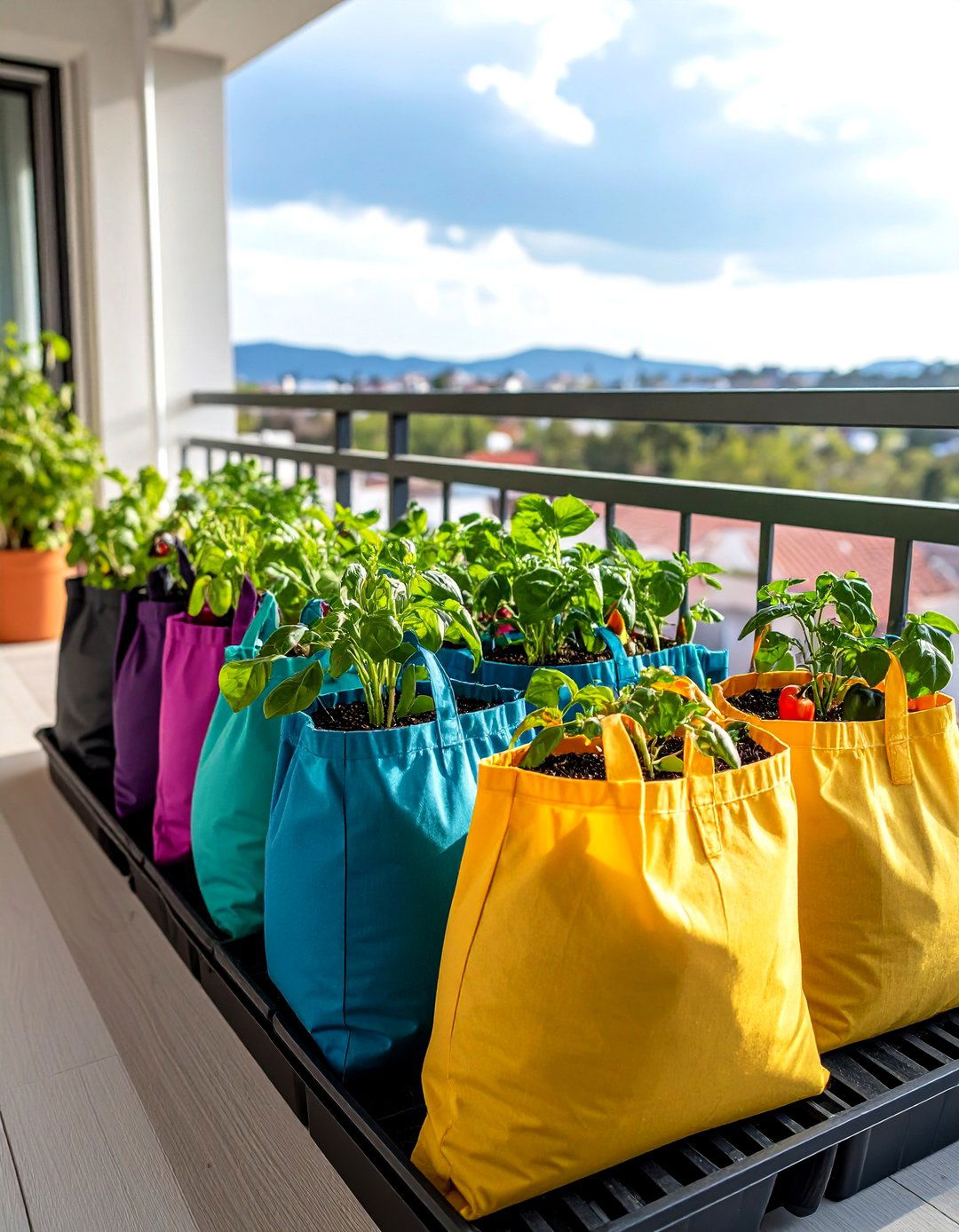
Fabric pots—often promoted for balcony use because they’re lightweight and air-prune roots—offer healthier growth than rigid plastic, especially for peppers and eggplants. Place bags on plastic trays to capture runoff and slide them around to chase sun. When winter arrives, fold them flat for storage or lug them indoors without scratching floors. To prevent rapid drying, mulch the topsoil with coconut coir and group bags to create a wind-buffered microclimate.
11. Edible Flower Boxes for Color and Cuisine
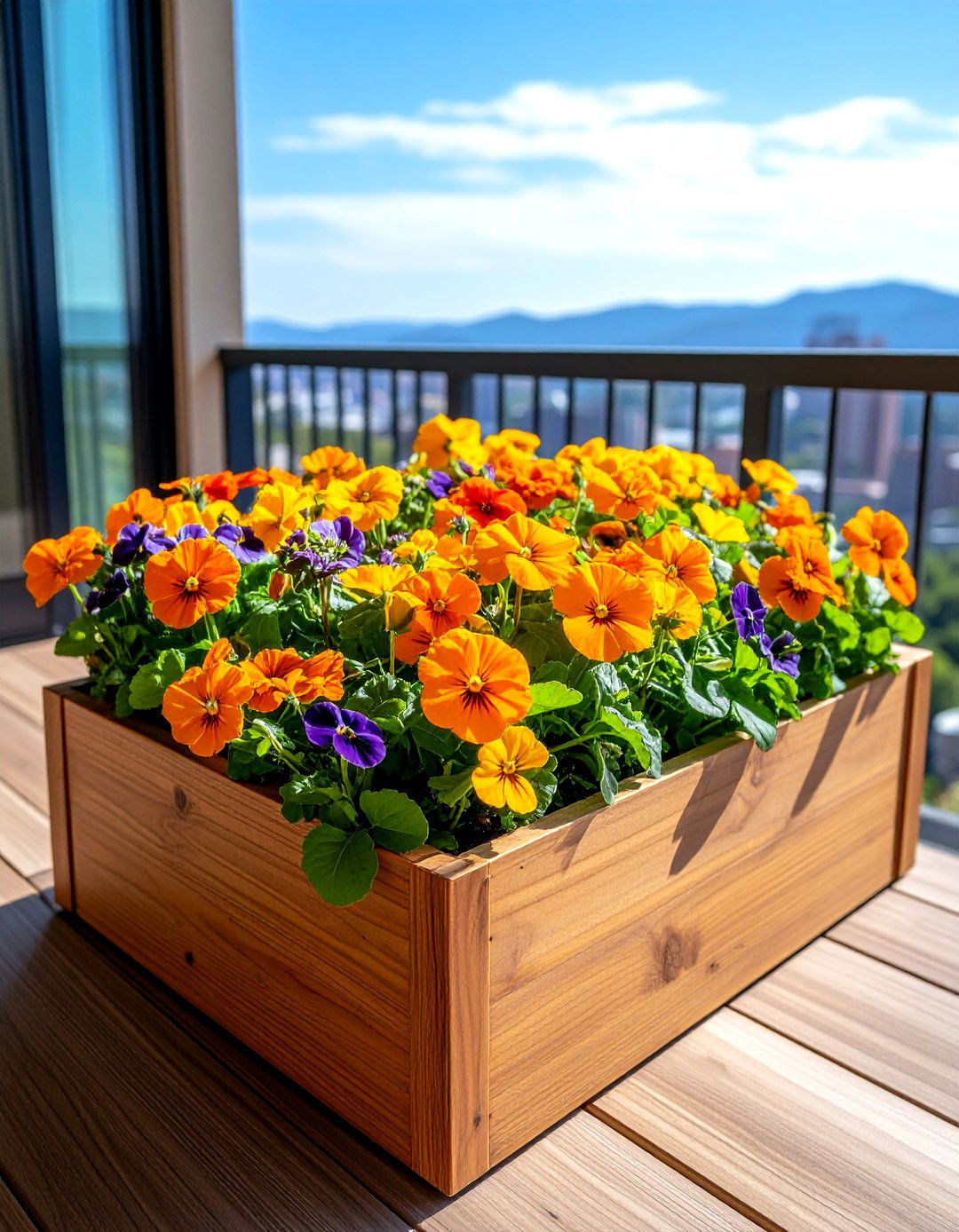
A pastel riot of violas, calendula, and nasturtiums turns a green balcony into a pollinator café while spicing up salads with peppery petals. Sow successive batches every three weeks to maintain bloom density, deadheading regularly to prolong the show. Position boxes where you can see them from the kitchen to remind yourself to harvest petals—freshness is key to taste and nutrition.
12. Bench-Planter Combo Doubles as Seating and Soil
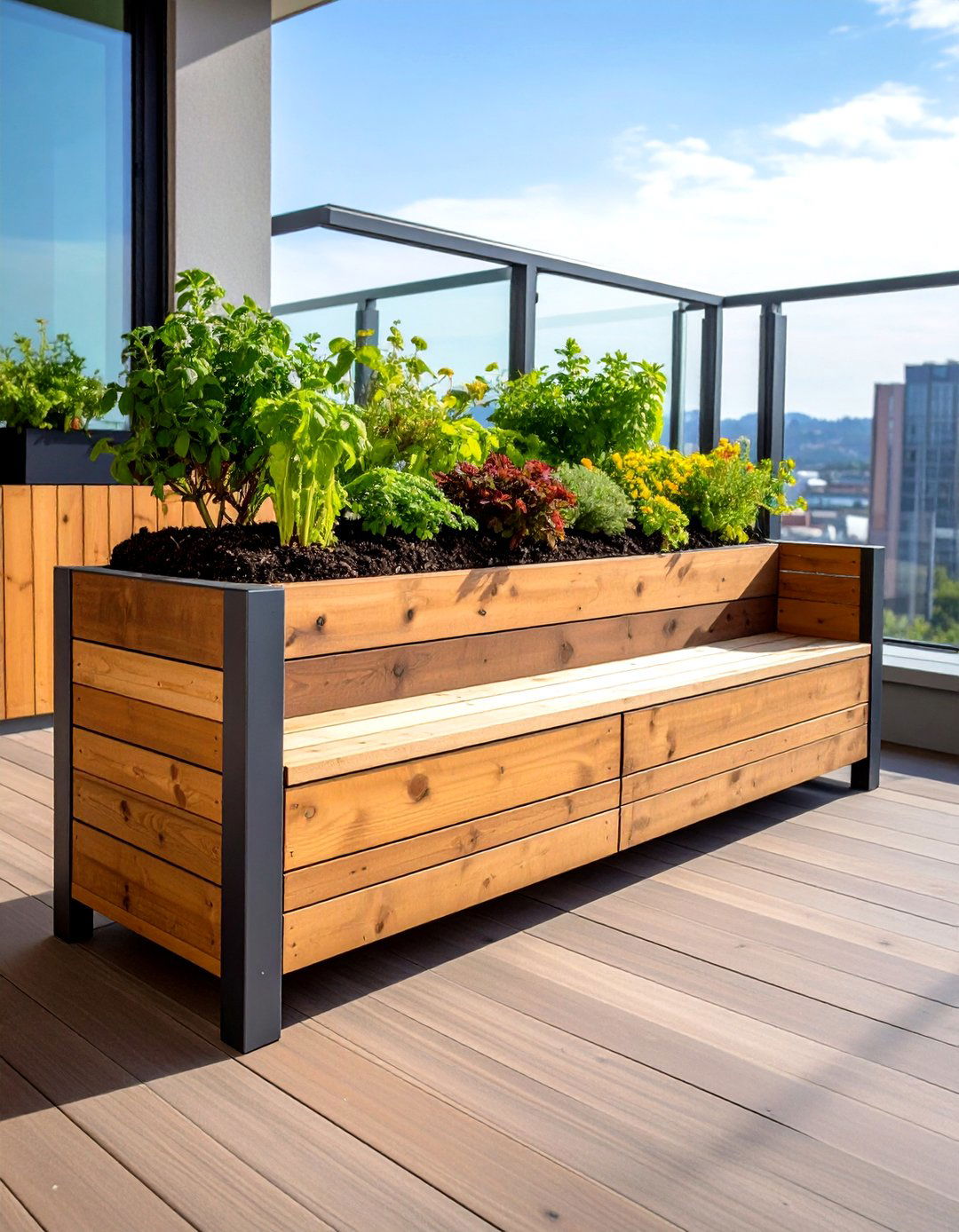
By integrating deep cedar planters into the sides of a storage bench, you gain hidden cushion space while the soil mass stabilizes temperatures for thirsty ornamentals. Use waterproof membrane and ensure drainage holes sit above a discreet drip tray. Weight calculations show most balconies can handle a 1.5 m seat-planter unit when filled with lightweight potting mix and perlite; always cross-check with building codes.
13. Cable-Trellis Privacy Screen with Climbing Beans
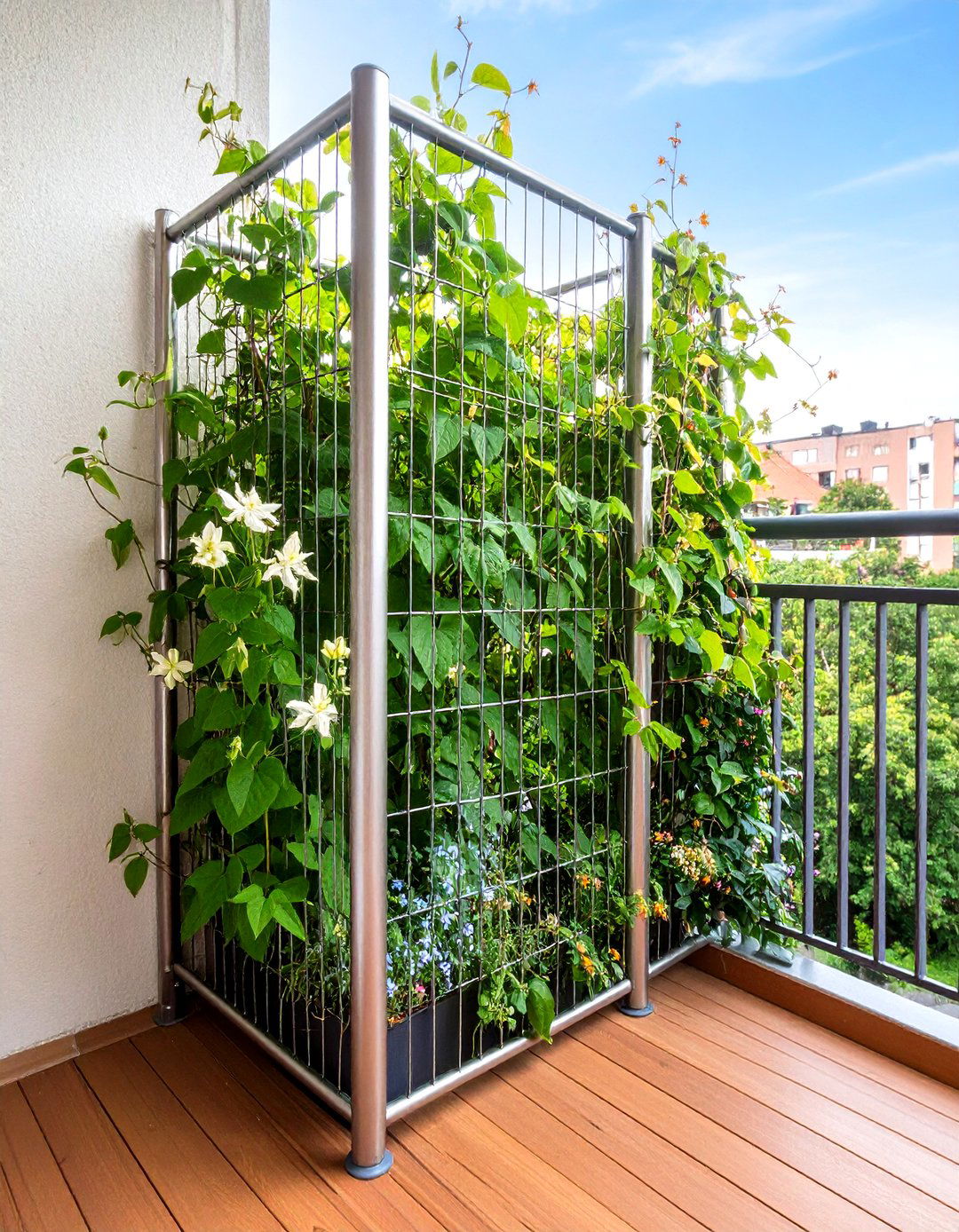
Stainless-steel wire trellis kits, originally marketed for facades, install easily on balcony posts to host scarlet runner beans or clematis, giving you a living privacy wall that filters wind. Plants trained horizontally encourage dense foliage; pinch tips at waist height to thicken coverage. Harvest beans young to keep vines flowering through late summer, and under-plant with shade-tolerant herbs like chervil.
14. Dwarf Espalier Fruit Trees for Balcony Orchards
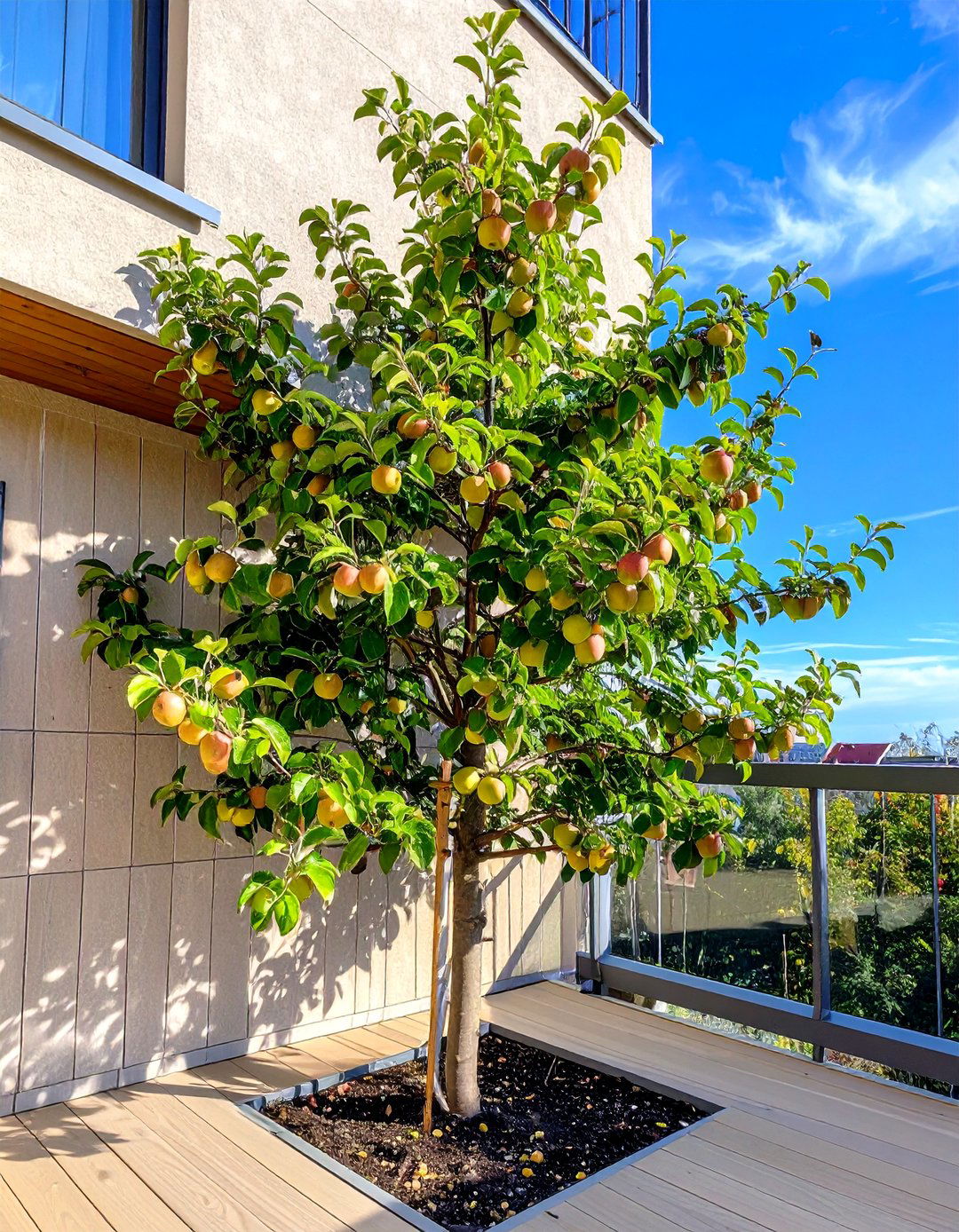
A multi-graft apple espalier can produce half a bushel of fruit in a 40-litre container with branches fanned flat against a sunny wall. Secure limbs to bamboo canes tied to the railing, thinning fruitlets early to reduce weight. Feed monthly with potassium-rich seaweed and overwinter by wrapping the pot in burlap; this minimalist orchard delivers diversity without crowding floor space.
15. Collapsible Cold Frame Extends Shoulder Seasons
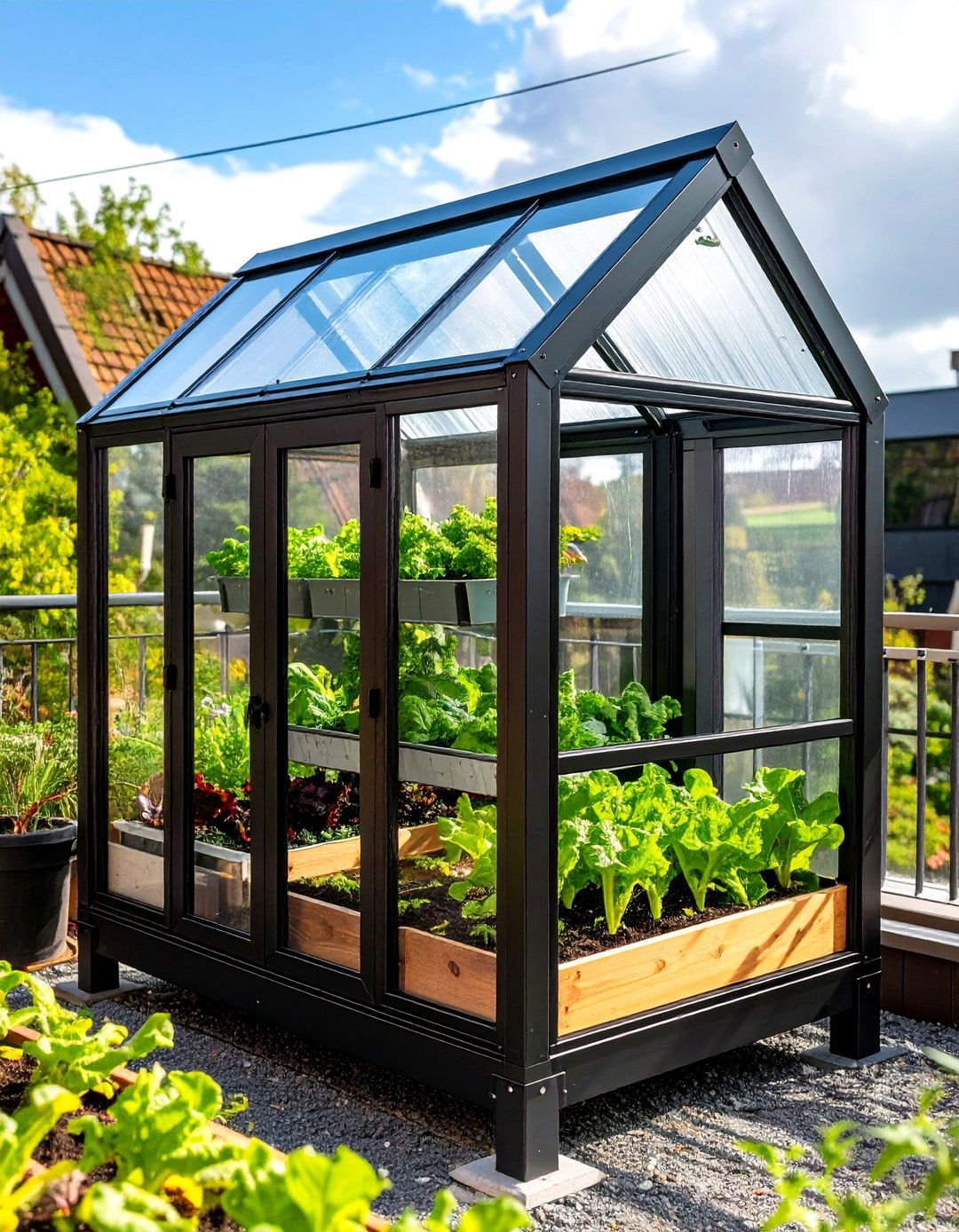
When frost threatens, pop a fold-out fir-wood cold frame over lettuce trays to hold daytime warmth into the evening, keeping salad production rolling several weeks longer. Transparent polycarbonate panels diffuse harsh light, preventing leaf scorch, while adjustable vents release excess heat. In summer, store panels behind a wardrobe and use the wooden base as a potting bench.
16. Aroma Trail: Night-Scented Garden for Relaxed Evenings
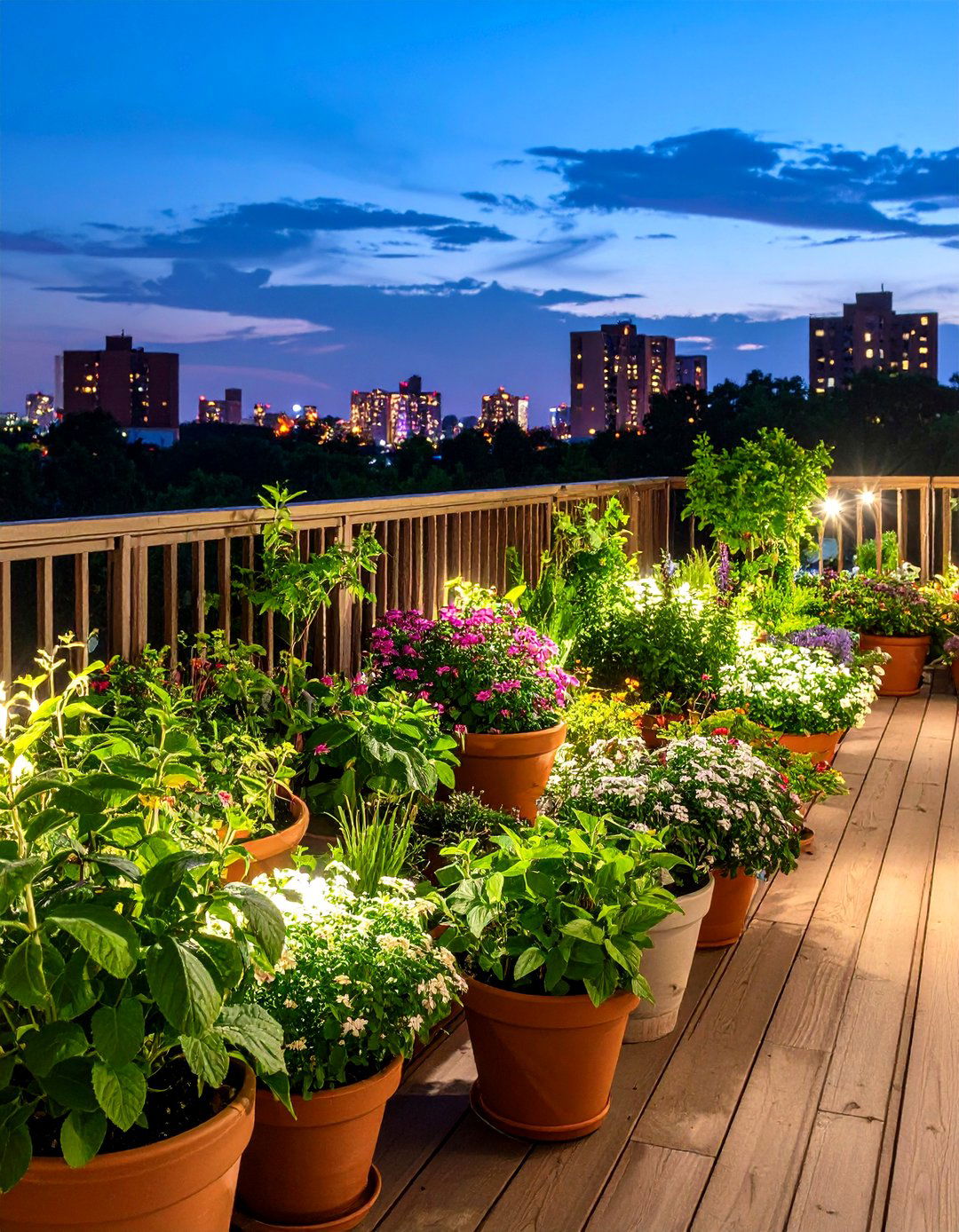
Line the balcony’s pathway with pots of night-blooming nicotiana, lemon balm, and star jasmine so fragrance ramps up as temperatures drop, supporting stress relief after work. Essential-oil-rich foliage also deters biting insects naturally. Water plants early in the day; damp evening foliage invites mildew. Layer a solar fairy-light string through stems to enhance the twilight ambiance without adding wall fixtures.
17. Bee Hotel and Water Dish Support Micro-Wildlife
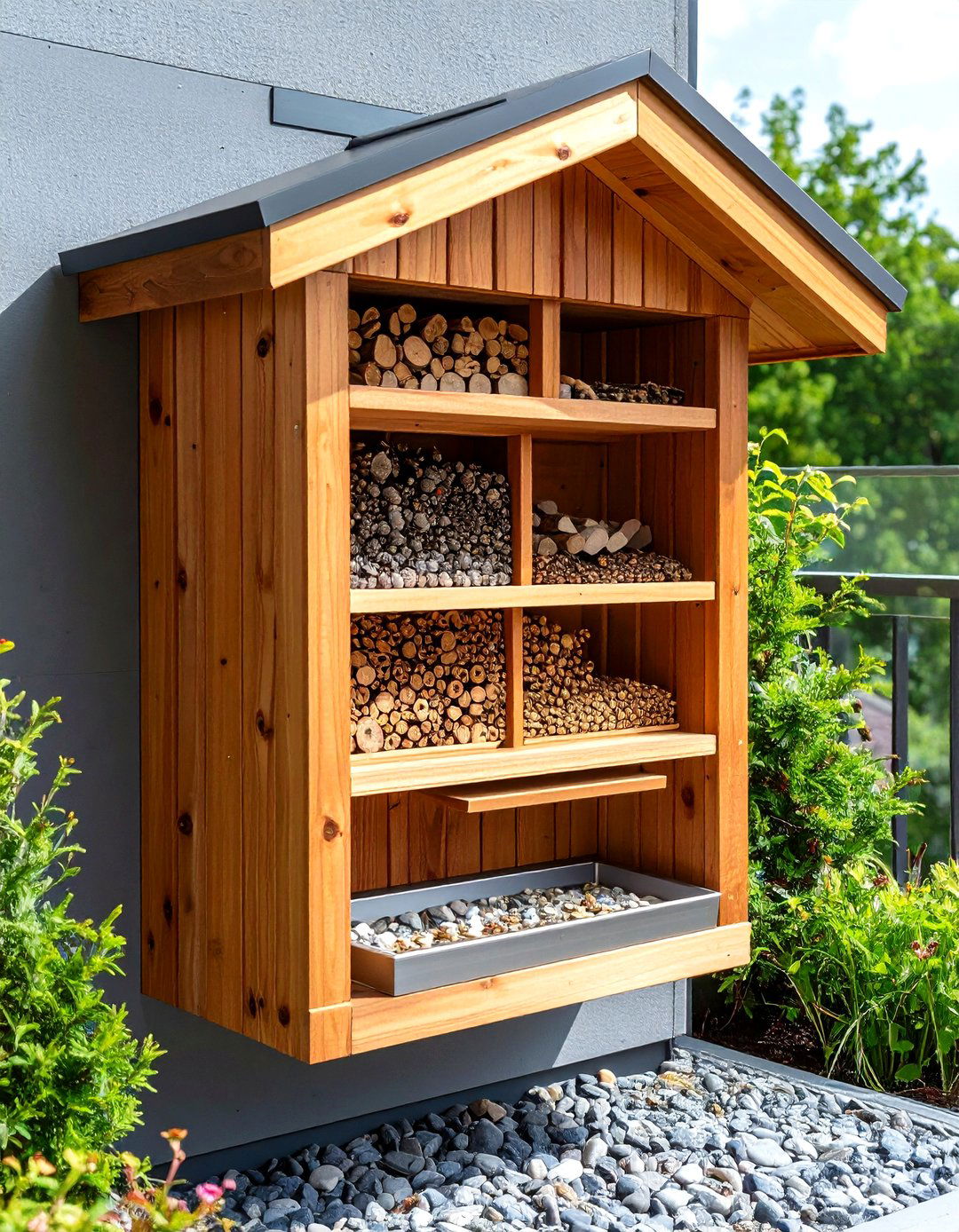
Mount a cedar bee block and shallow pebble-filled saucer on the east wall to offer solitary bees nesting sites and safe hydration. Studies show pairing native flowers with nesting habitat can boost balcony pollination rates by over 40 %. Refresh water daily and clean the hotel each winter to prevent parasite buildup—your small intervention ripples into healthier urban ecosystems.
18. Low-Water Succulent Rockery for South-Facing Balconies
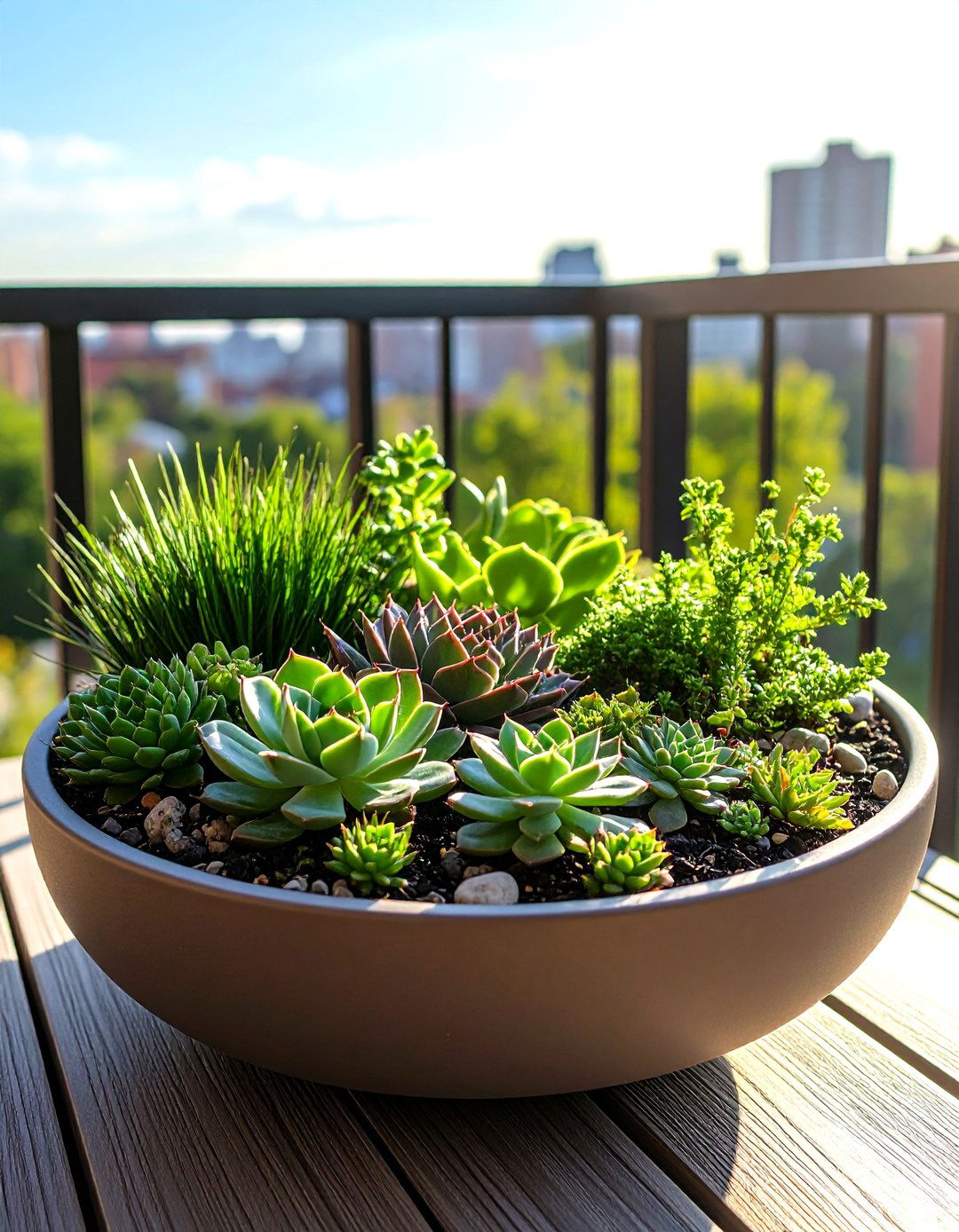
Grouping echeveria, sedum, and black mondo grass in a broad, shallow dish creates a desert vignette that shrugs off scorch. Use a 1 : 1 mix of cactus soil and pumice, topping with decorative gravel to suppress weeds. Tilt the planter five degrees to drain water away from building walls after storms and rotate monthly for even sun.
19. Multi-Level Plant Ladder Maximizes Vertical Real Estate
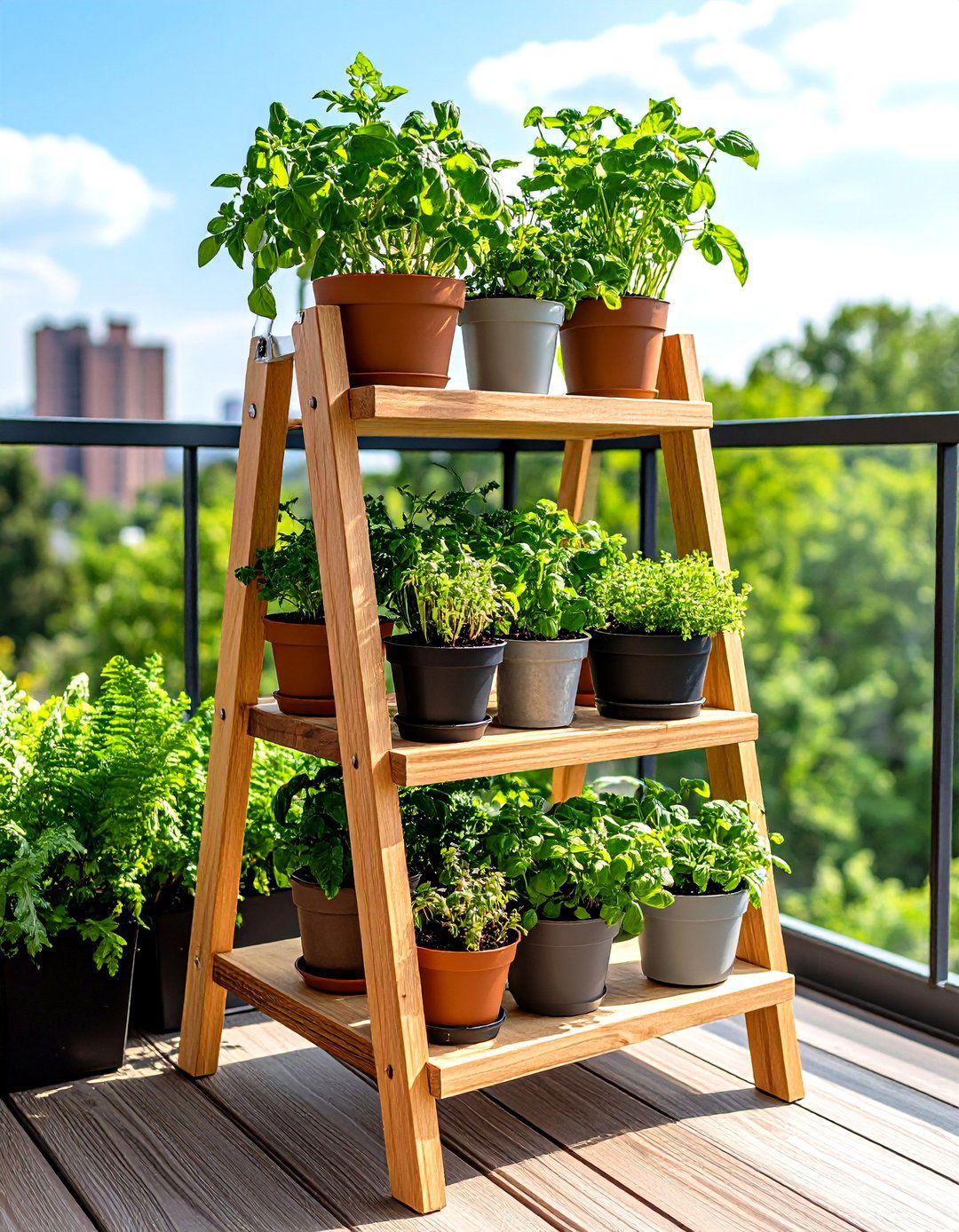
A three-tier wooden ladder stand enables small pots to bask in full sun without shading one another—ideal for space-hungry cherry tomatoes on top, mid-tier herbs, and ferny shade species below. Secure the ladder with an L-bracket to the wall for wind safety and treat wood annually with linseed oil to resist moisture.
20. Meditation Nook with Tabletop Fountain and Moss

Finally, carve out a corner sanctuary by pairing a low-hum tabletop fountain with moisture-loving moss trays. The gentle burble masks city traffic and raises local humidity, benefiting shade plants. Choose a fountain under 3 kg to stay within weight allowances, and set it on a waterproof mat. Surround it with moss species tucked into shallow ceramic dishes; mist lightly each morning to keep carpets plush.
Conclusion:
Transforming a modest balcony into a thriving green balcony hinges on stacking functions—edible walls that double as insulation, shade structures that harvest sun, and tech that frees you to travel. From native pollinator plots to smart-irrigated herb towers, each project respects small-space realities while enriching biodiversity, slashing resource use, and elevating daily wellbeing. Choose one idea or layer several; either way, every pot and trellis contributes to a cooler, tastier, and more vibrant urban habitat.


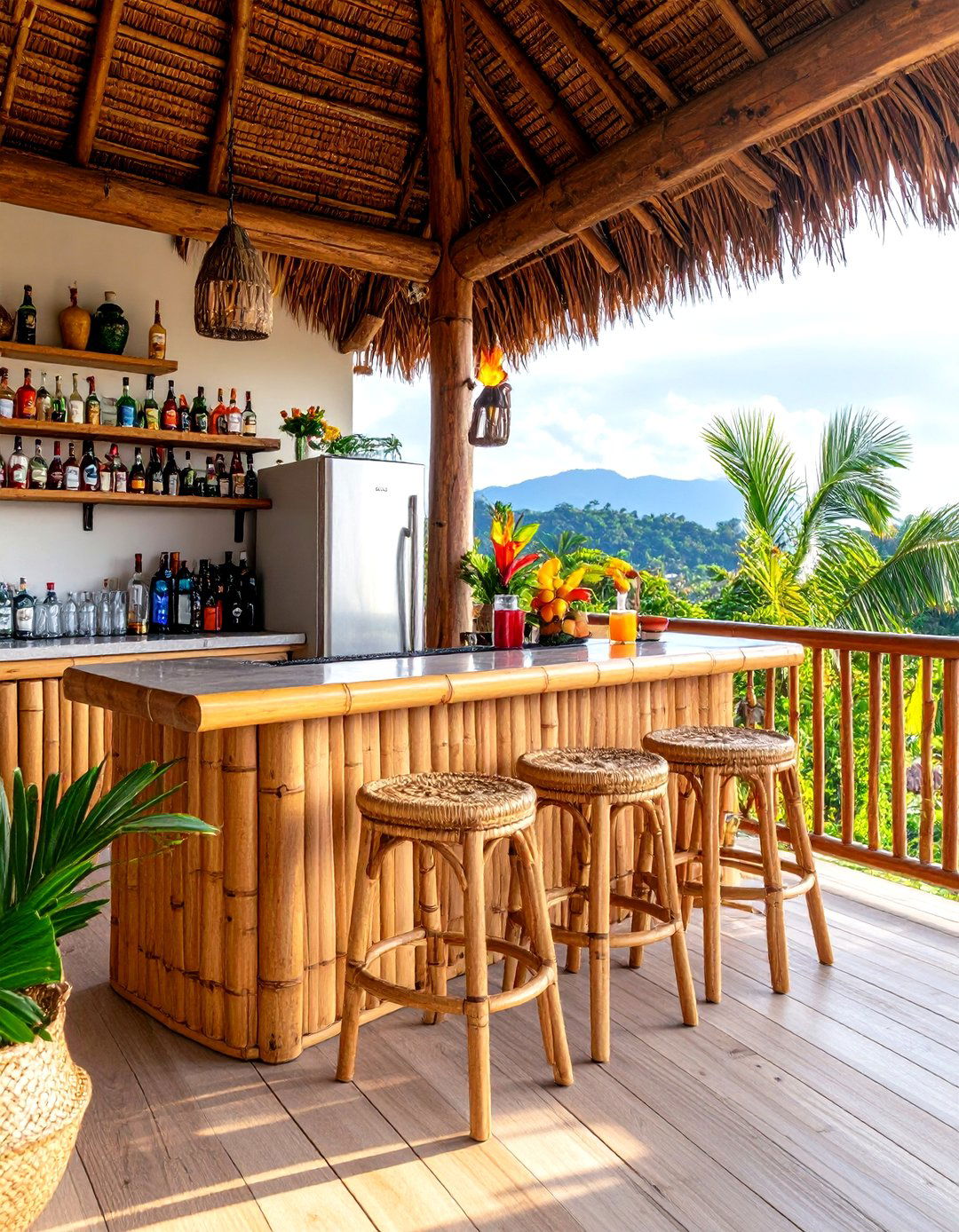


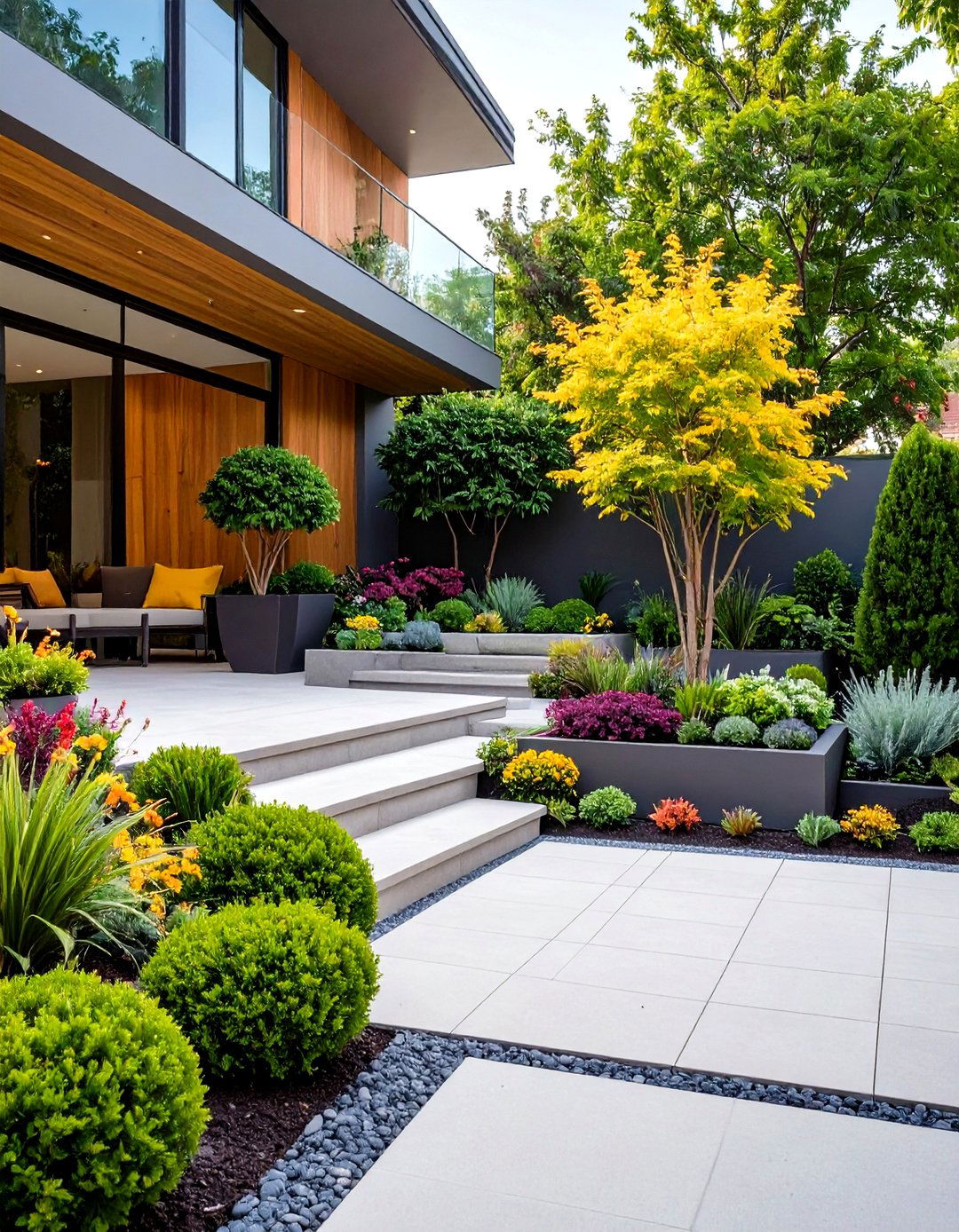

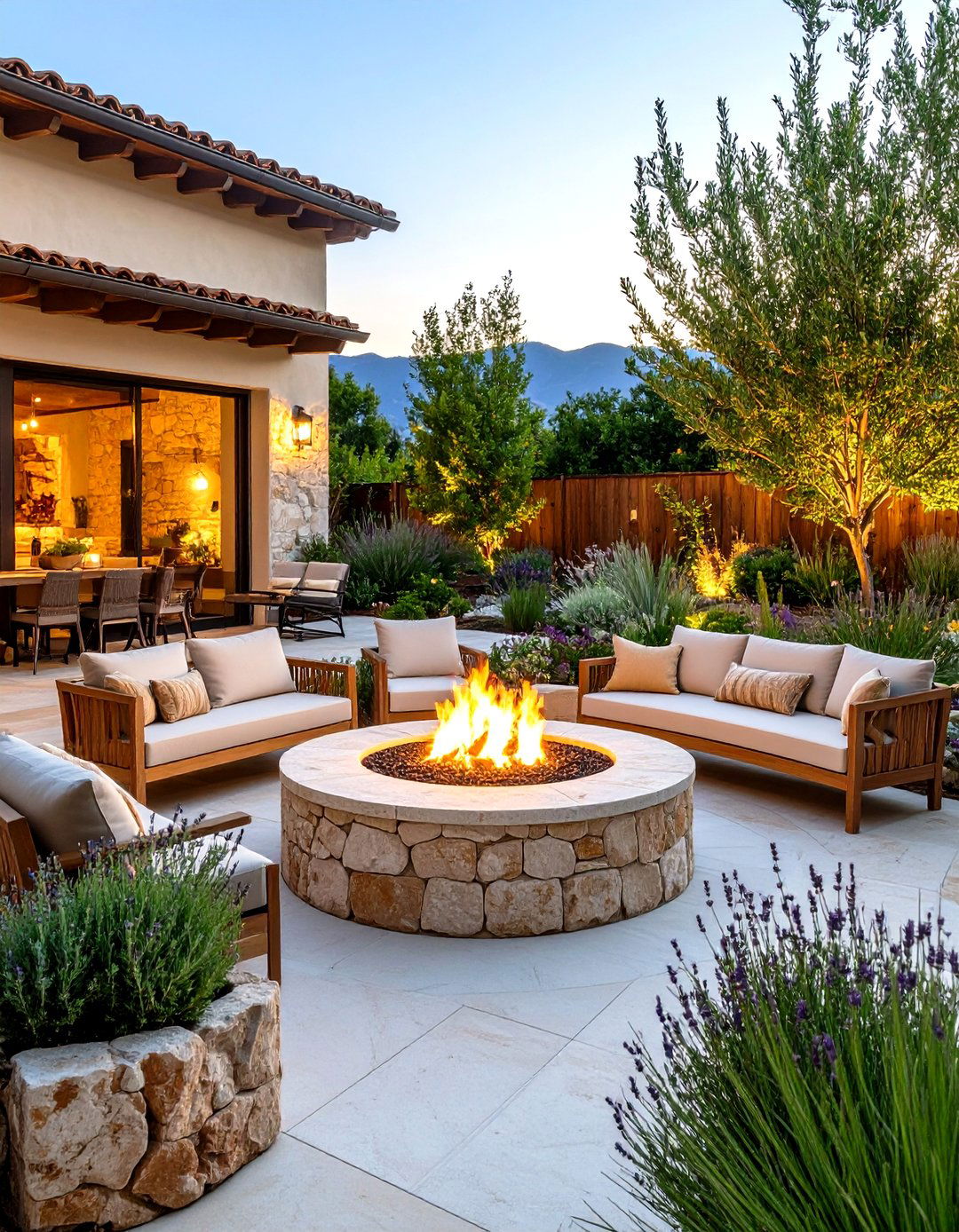
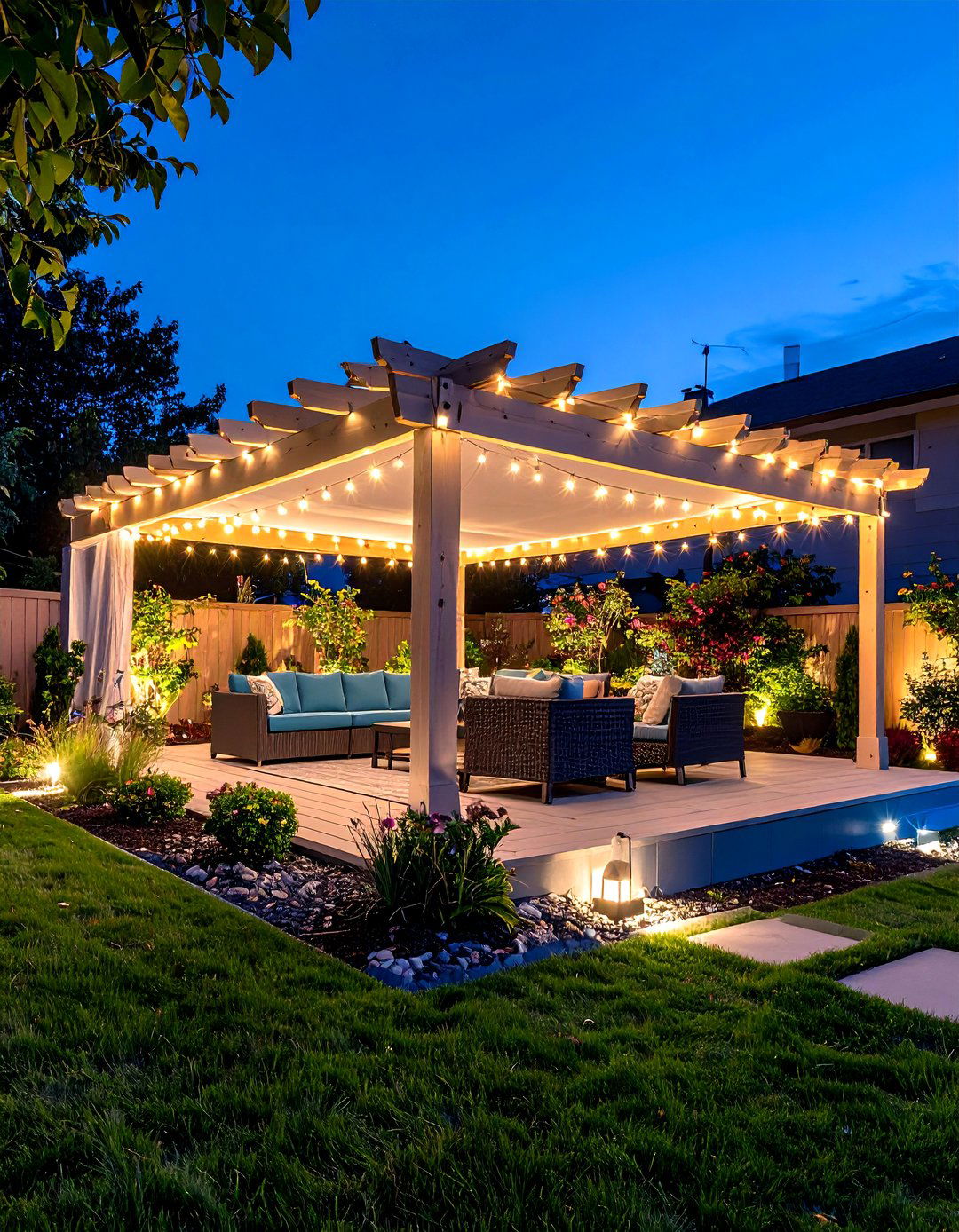
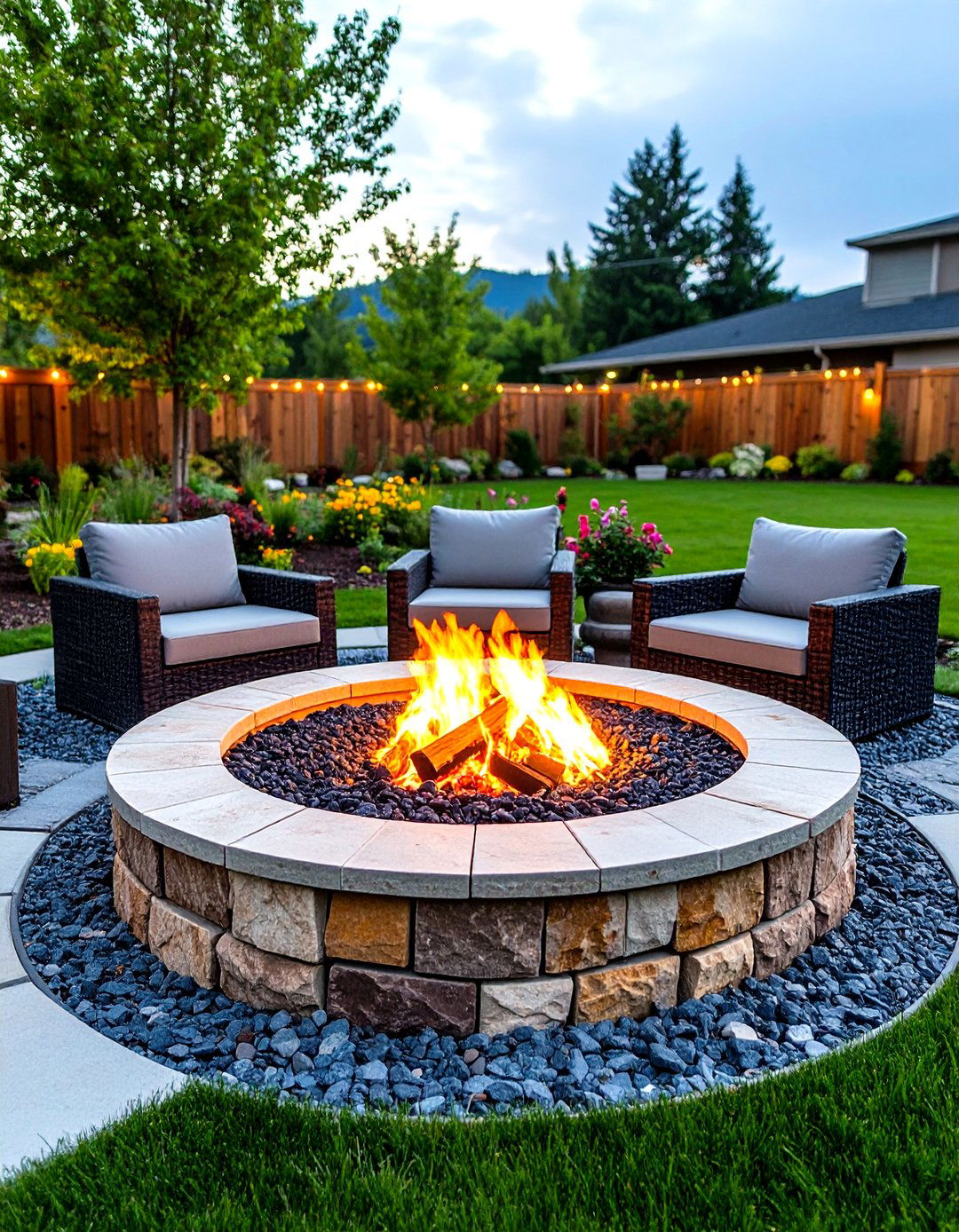
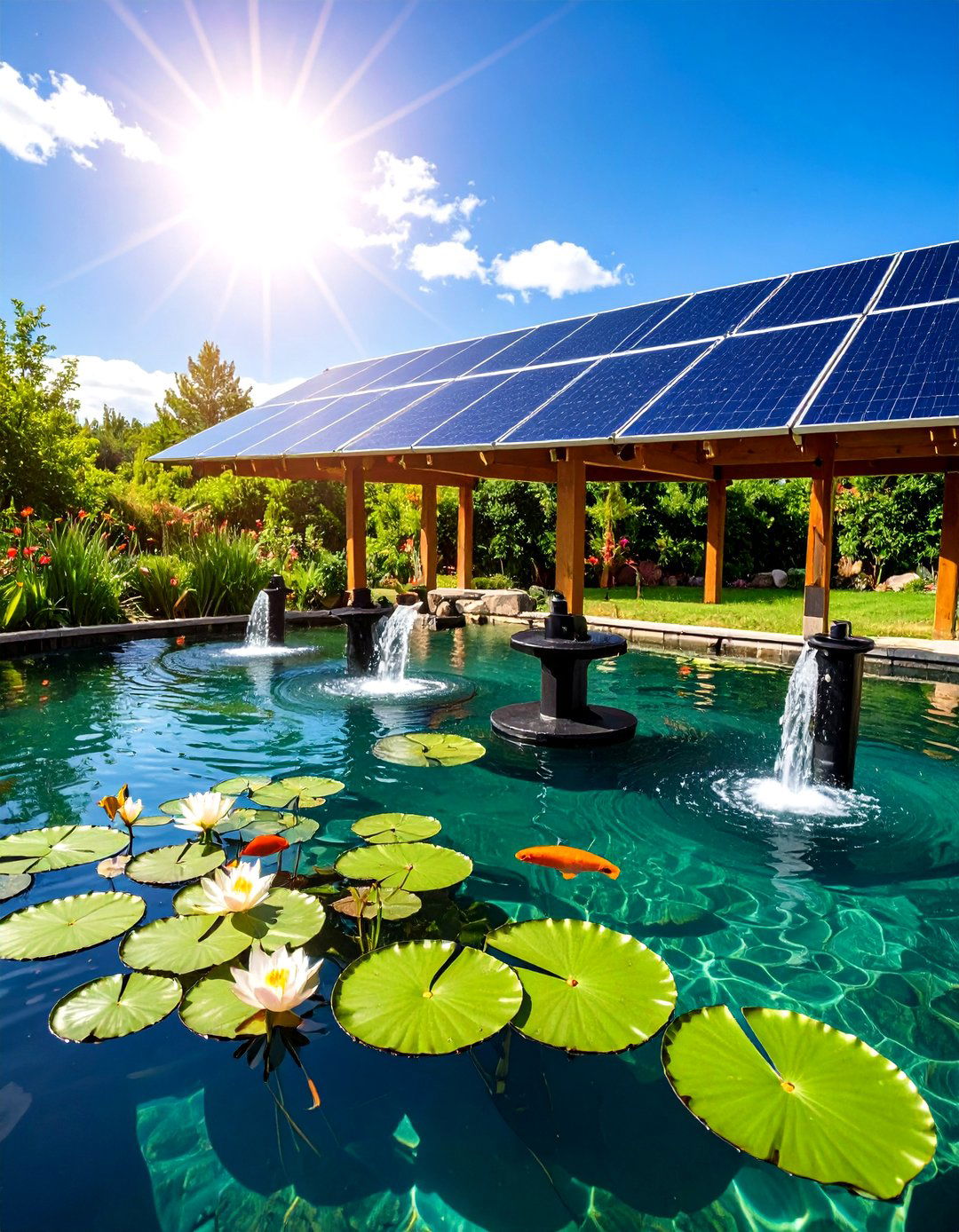
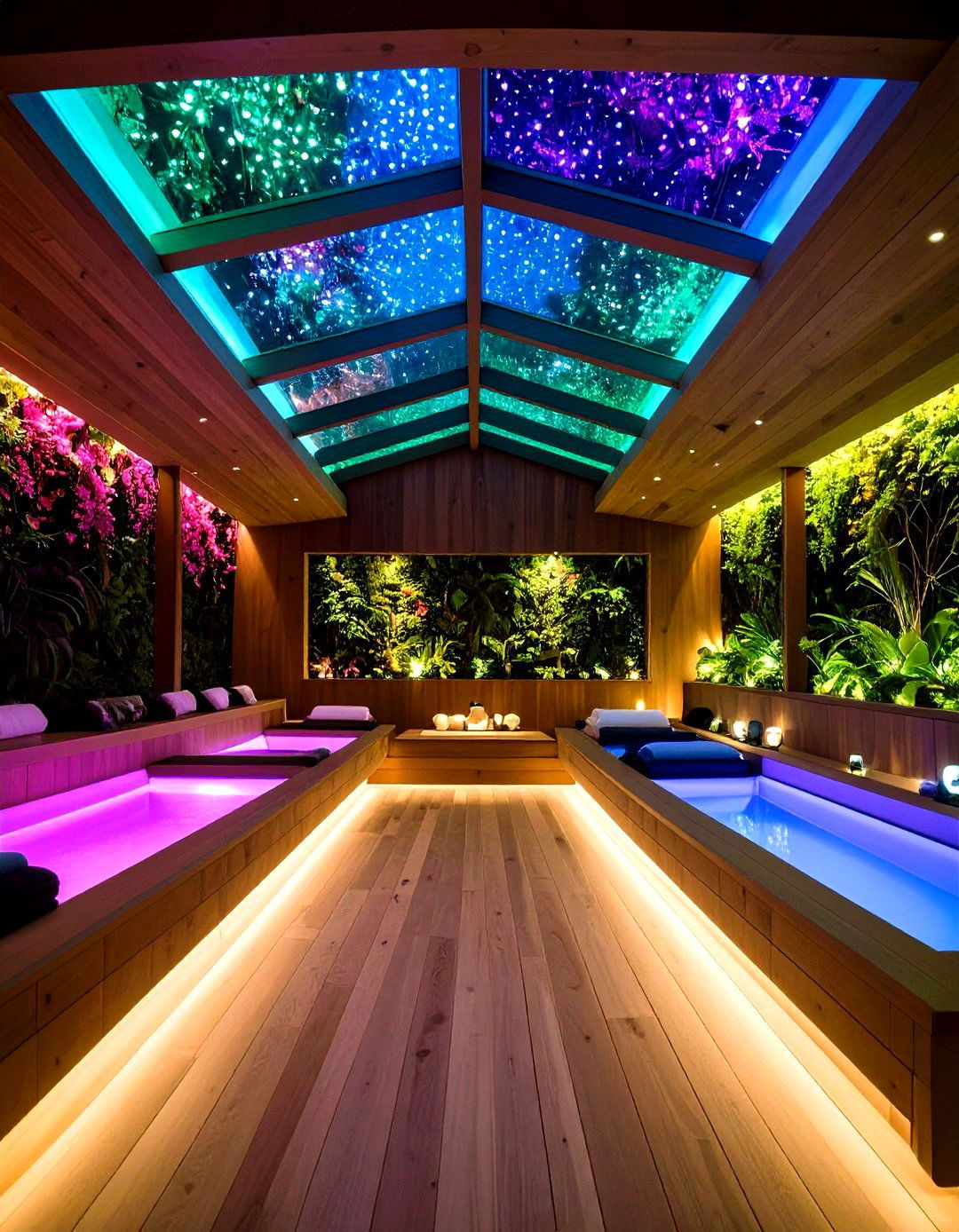
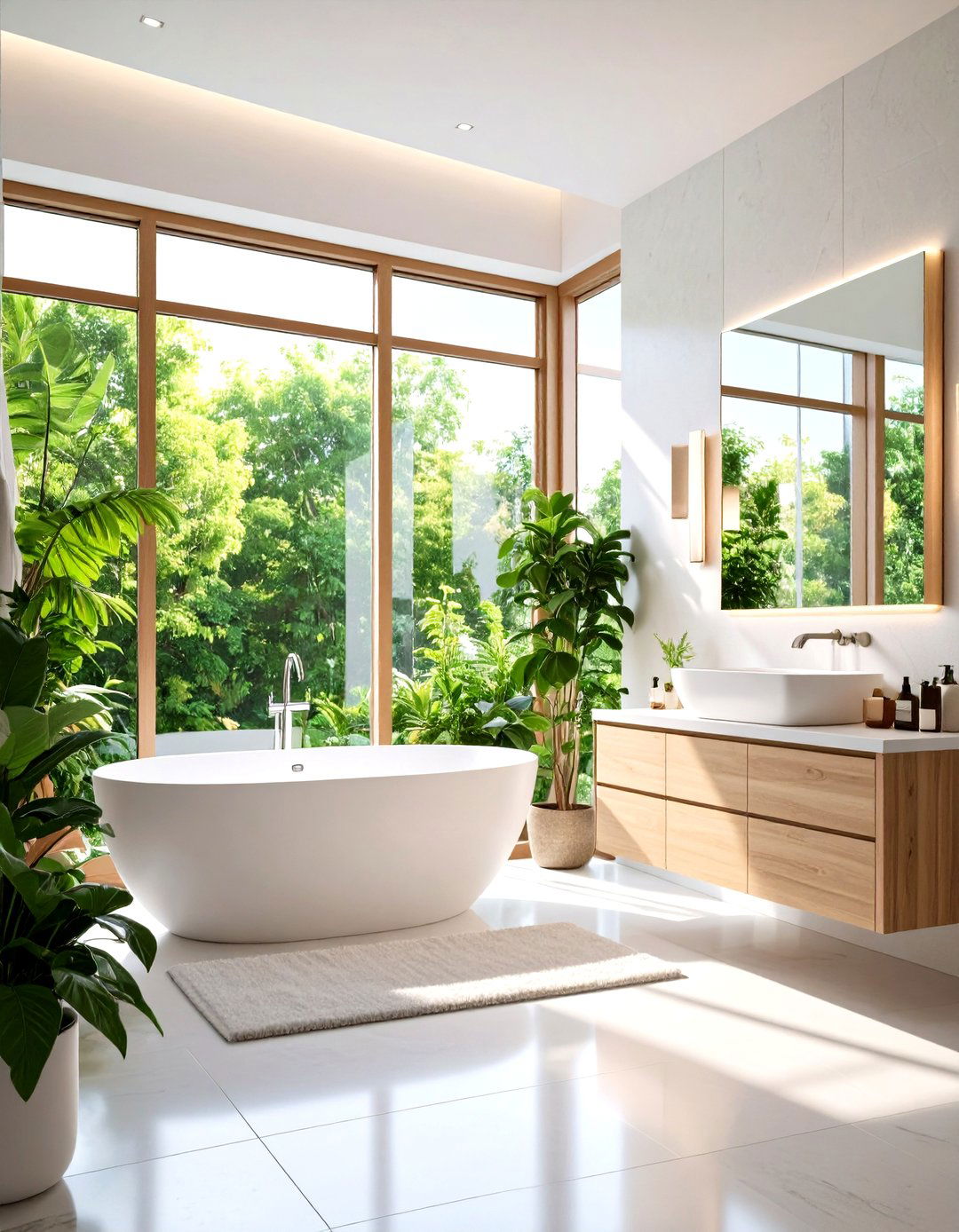
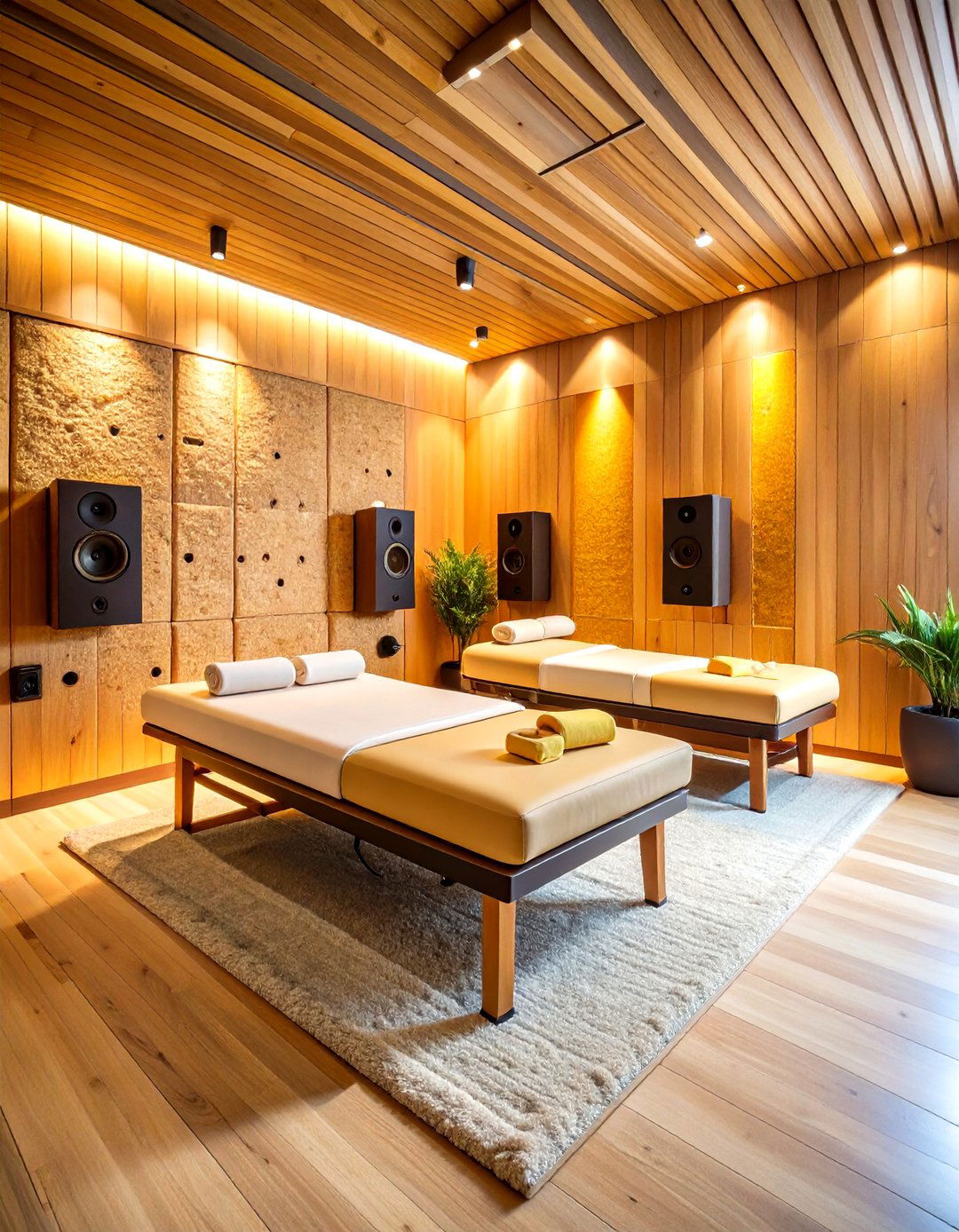
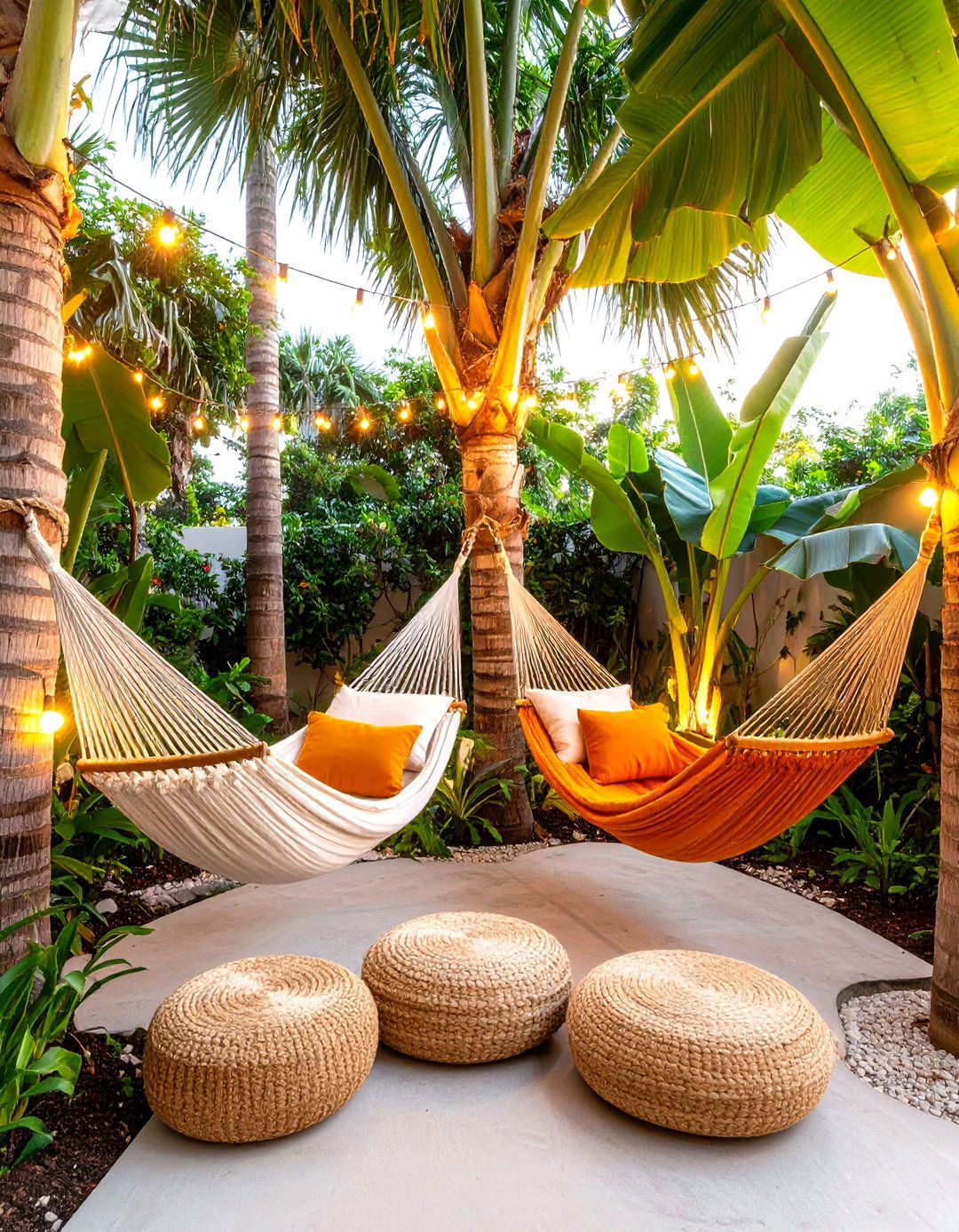
Leave a Reply